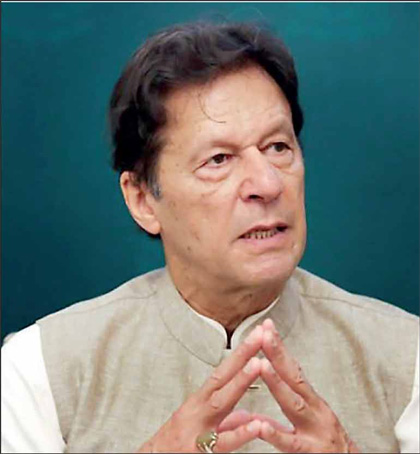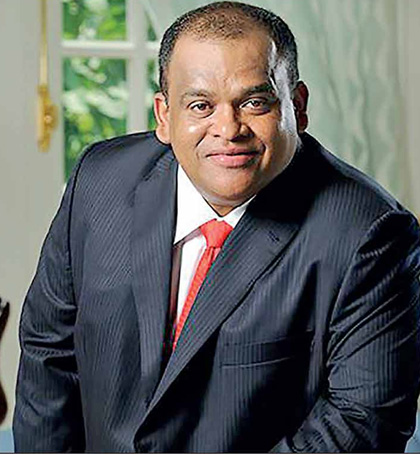Saturday Dec 14, 2024
Saturday Dec 14, 2024
Friday, 3 September 2021 00:00 - - {{hitsCtrl.values.hits}}

Oxford-educated Pakistani PM Imran Khan has emphasised the only solution to the COVID-19 crisis is imposing a “SMART lockdown”

Businessman Dammika Perera says Sri Lanka cannot afford a prolonged lockdown due to weak finances
 According to an article in the Daily FT, a day of lockdown in Sri Lanka causes a negative impact of Rs. 22.4 billion, or $ 112 million, based on the economic projection model developed by the Imperial College.
According to an article in the Daily FT, a day of lockdown in Sri Lanka causes a negative impact of Rs. 22.4 billion, or $ 112 million, based on the economic projection model developed by the Imperial College.
It estimates the 10-day lockdown to 30 August to have had an impact of $ 1.12 billion, or 1.3%, of GDP (Rs. 224 billion) whilst a four-week lockdown till 18 September would cost $ 1.67 billion, or 1.9% of GDP (Rs. 334 billion). A six-week lockdown ending 2 October followed by gradual relaxation would cost the economy $ 2.22 billion, or 2.5%, of GDP (over Rs. 444 billion). These numbers however need further validation.
On the other hand, WHO Representative to Sri Lanka Dr. Alaka Singh and its facilitator, WHO Consultant Dr. Palitha Abeykoon recommended that the ongoing lockdown should be extended till 18 September.
State Minister of Money and Capital Market and State Enterprise Reforms Ajith Nivard Cabraal responding to that news item said Sri Lanka cannot afford a lockdown due to economic reasons. State Minister Cabraal said the country must be kept open since the long-term economic damages would be extensive and deep.
The State Minister said macro fundamentals would be seriously compromised while 4.5 million in small and medium scale businesses would face serious consequences. State Minister Cabraal is spot on because in Sri Lanka close to 60% of our working population will not be able to face a prolonged lockdown.
Businessman Dhammika Perera also emphasised in a televised interview that the country does not have the wealth to prolong a lockdown.
Prime Minister Imran Khan who was faced with a similar dilemma defended his Government’s decision to end the coronavirus lockdown in the country, saying such sweeping restrictions could cause a “collapse of the economy” and give rise to poverty.
He further noted that the world had discovered through experience that the only solution to the COVID-19 crisis was imposing a “SMART lockdown” that allows economic activity to continue while implementing standard operating procedures (SOPs), principally that of public health and pandemic management.
SMART lockdown
A SMART lockdown according to a Google search is a strategy generally referred to where only virus hotspots are placed under a blanket lockdown. Accordingly, research suggests that SMART lockdowns are aimed at restricting the maximum number of Infected Persons (IPs) in a targeted manner to an identified hotspot, with a view to contain/retard the local COVID-19 spread and thereby break the transmission cycle of disease. This would also entail increased epidemiological interventions, as testing, tracing, quarantine and prolonged lockdowns have made survival difficult for many segments of society.
Recent research by the Pakistan Institute of Development Economics (PIDE) titled ‘Opting for a SMART Lockdown in Pakistan,’ has suggested that a country needs a policy that, in parallel – not sequentially, contains the infection and allows some basic level of economic activity.
Given that it is impossible to exactly predict for how long the virus would persist in the country a SMART (Specific, Measurable, Achievable, Realistic and Targeted) lockdown instead of a blanket lockdown makes economic sense for a country that is struggling to make ends meet.
Objective
So a SMART lockdown, according to several experts in India and Pakistan who claim to have had success by enforcing SMART lockdowns, means closing selectively the areas experiencing an outbreak of the pandemic.
The lockdown is to provide relief and ease restriction to the daily working class to survive economically along with fighting off the virus. This is intended to help the poor segments to maintain their livelihood while isolating the coronavirus cases and their contacts to contain the disease, whilst allowing the key economic centres to function at 50% or more.
But Sri Lanka’s real dilemma was echoed by MP Dr. Senaratne recently, when he said Sri Lanka’s daily coronavirus deaths were thirtyfold that of India and Pakistan in terms of population. He further said Sri Lanka had recorded nine deaths per million, while India has recorded 0.3, Pakistan 0.3 and Bangladesh 0.7. Furthermore, Dr. Senaratne said the method of implementing quarantine curfew to mitigate the COVID-19 pandemic had failed. Dr. Senaratne has been continuously advocating the need to vaccinate to build herd immunity to could contain the virus.
Way forward
Given our financial plight as highlighted by the Imperial College study, can Sri Lanka afford comprehensive social distancing measures (blanket lockdown), to contain the coronavirus, while avoiding economic and social ruin?
On the other hand, the World Health Organisation (WHO) has warned countries against having “lax measures” in place and also against depending too much on reaching herd immunity to halt the spread of COVID-19. So what are Sri Lanka’s options? Not many.
Firstly, we can’t afford a complete lockdown due to daily wage earners (60%) losing their livelihoods; the Government does not have the money to finance them to keep them at home. Nor does it have the forex reserves.
So what do we do? We still don’t know how long it would take to contain the spread of the deadly virus. Therefore the economy needs to run, as suggested by Minister Cabraal. The key economic sectors needs to function to ensure our exports and services leave the shores on time. To do this the support services needs to function and distribution of vaccines must proceed aggressively.
The Army so far has done a good job with the vaccinations. That must continue. So whilst the economic centres are allowed to operate, the Government must ensure the “hotspots” are isolated and the virus spread outward from those areas is contained. Technology can also be used to trace and manage the people in these hotspots. That is the only way Sri Lanka is going to survive this economic and health crisis. As Infectious Disease Expert ANU Prof. Sanjaya Senanayake points out: “Vaccines are great, but they are not the silver bullet.”
Also in this crisis it is the responsibility of the Government given our financial plight to get concessional borrowing – to pay for critical imports and to meet the external debt obligations. Also given the huge debt vulnerabilities in countries like Sri Lanka, the G7, UN, WB and the IMF will need to take steps now to build a more resilient and sustainable future for all countries post COVID-19.

Sri Lanka current situation